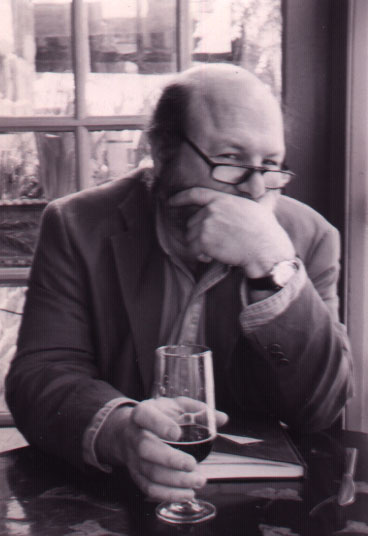 |
Bentzman
Suburban Soliloquy 120.
|
 |
Bentzman
Suburban Soliloquy 120.
|
| My friend Gary, whom I have never
met, is a lawyer in Michigan. I forget how our friendship began, but I
think he first wrote to me on the subject of paper after reading one of
my Soliloquies. We share a feeling of wonder for papers and pens and
inks, an admiration for the charm of their design, the care of their
manufacture, and the intrinsic beauty of their purpose. We put our
fondness for these materials into practice, our friendship having
continued exclusively through the medium of letter writing. With his last letter, Gary enclosed an example of antique stationery, one of a batch of personal letters written in the Nineteenth Century that he had purchased. As he explained in his letter, “I enclose one of a series of notes I bought on eBay. E.L. Stanley (always ‘E’, and I can never decipher ‘L___’, was a London politician according to the eBay listing), one of a line of Stanleys, and involved in education reform ... I thought the paper, and the imprint might be of interest to you.” The paper is indeed interesting. A folded note which covers the palm, which then unfolds to cover two palms, it is a glazed paper with a laid finish and the watermark Towgood’s Extra Super. Stamped into the top left corner of the first page is a small impression of an oval containing the word “IVORY”. The paper was manufactured by Edward Towgood & Sons Ltd of Sawston, 1790-1971. Edward Towgood was famous not just for the quality of his papers, but for the care he gave his employees, building for them homes and a church. Today we might not even bother with paper. Content often arrives to our monitor divested of personal accoutrement. There is no context for when or where the message was crafted; absent are the writer’s aesthetics or proof of his or her touch. It has the coldness of an effortless creation. The message could easily be counterfeit. It is not an artifact that lends itself to being cherished. If it is to be physically saved, it is printed out on default paper, probably a bright white sheet of twenty-pound wood pulp paper designed to not jam the recipient’s inkjet printer, and as many copies as you want. The letter I held from Gary, both the one he wrote and the one he included, were originals rich in subtle clues about their authors. I examined the Nineteenth Century letter Gary had enclosed with his own. A tight scrawl of ink turned brown with age filled three of the folded note’s four pages. It was casual and hasty, judging by the handwriting. The writer corrected his errors by writing over them more heavily and squeezed a missing word part into the margin.
While my friend Gary does not yet know it, and will not know it until he reads this essay, the name he had difficulty discerning is the barrister Edward Lyulph Stanley (1839-1925), who in 1903 became the 4th Baron Stanley of Alderley and in 1909 the 4th Baron of Sheffield. The Honourable Edward Lyulph Stanley sat many years on the London School Board, was a Liberal Member of Parliament, and by one account an atheist. The address from which he writes, 40 Dover Street, his London home, would become in 1893 the new home of The Arts Club, a Gentlemen’s Club founded in 1863 by Charles Dickens. It was a terrific gift, but in this particular case I didn’t feel I could keep it. Last night I put it into an envelope with a letter from me and sent it back to Gary. I wrote, “You will notice that I have enclosed the antique letter that you sent me as a gift. Please do not feel insulted by its return. I am not shy about accepting gifts. Send me an Aston Martin DB9 and I will prove myself an unabashed receiver of gifts, undeterred by price. I will even send you a gracious thank you note insisting that I am unworthy of a DB9, but I would never send back the car. This 1866 letter from Edward L. Stanley to Mr Butler is an entirely different matter. Since you describe having a series spanning over twenty-years, I really feel you should keep them intact rather than disperse them.” It was enough just to have seen and handled the letter, and it was fun to exploit the internet to research the clues the letter contained as to its creator and the time in which he lived. I wish I knew more about Mr Butler and Mr Dalrymple. Given more time I might learn more. Meanwhile, I wonder if my friend Gary took the hint and will now send me an Aston Martin. Bruce Bentzman |
This essay is the most
recent in
a series of regular reports from the life and times of Mr
Bentzman. If you've any
comments or suggestions, the
writer would be pleased
to hear from you.
Mr Bentzman's
collection of poems, "Atheist Grace" is available from Amazon,
as are "The Short Stories
of B.H.Bentzman"